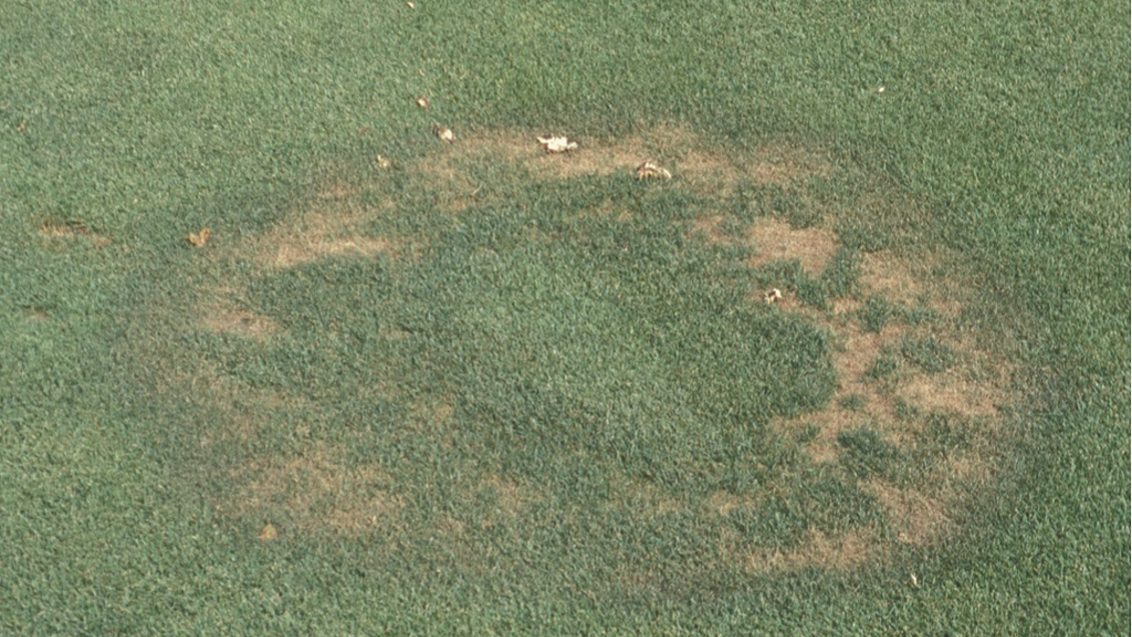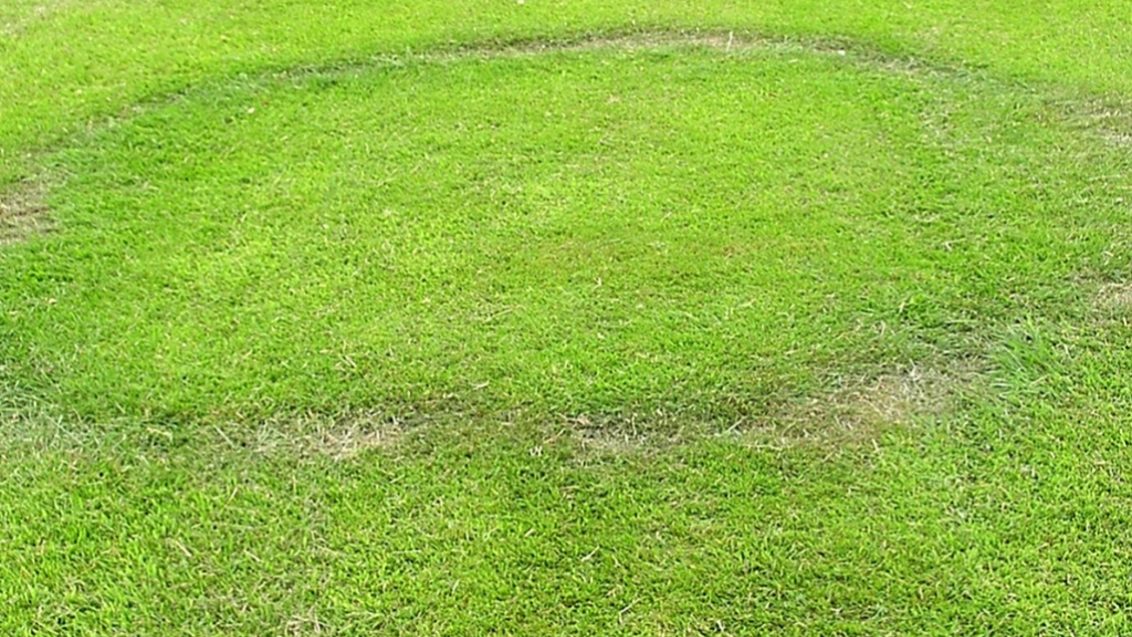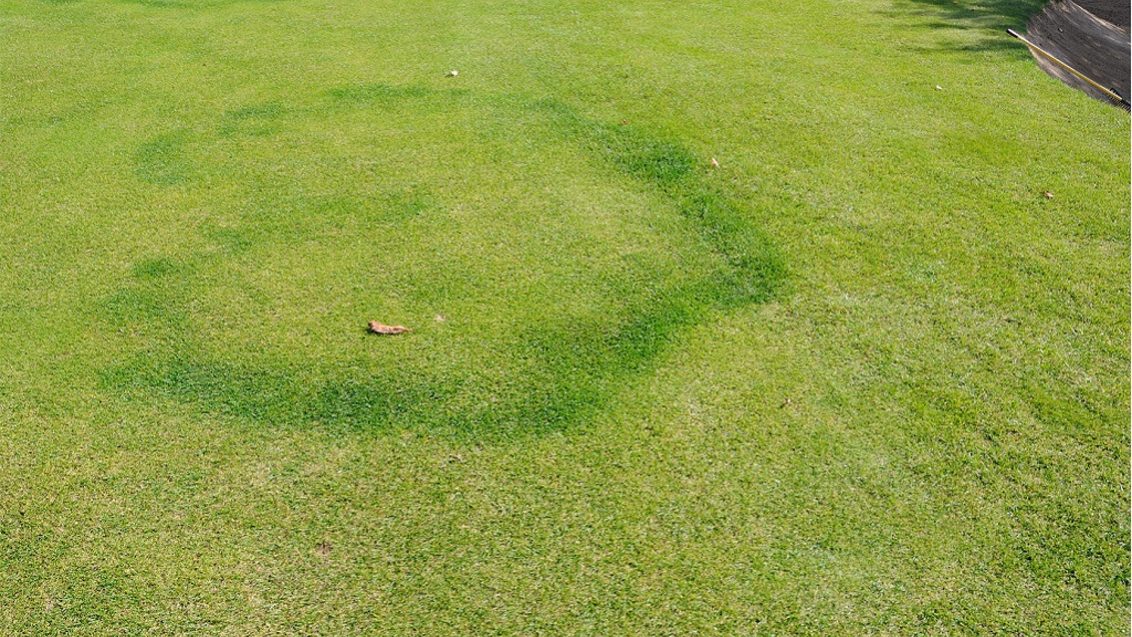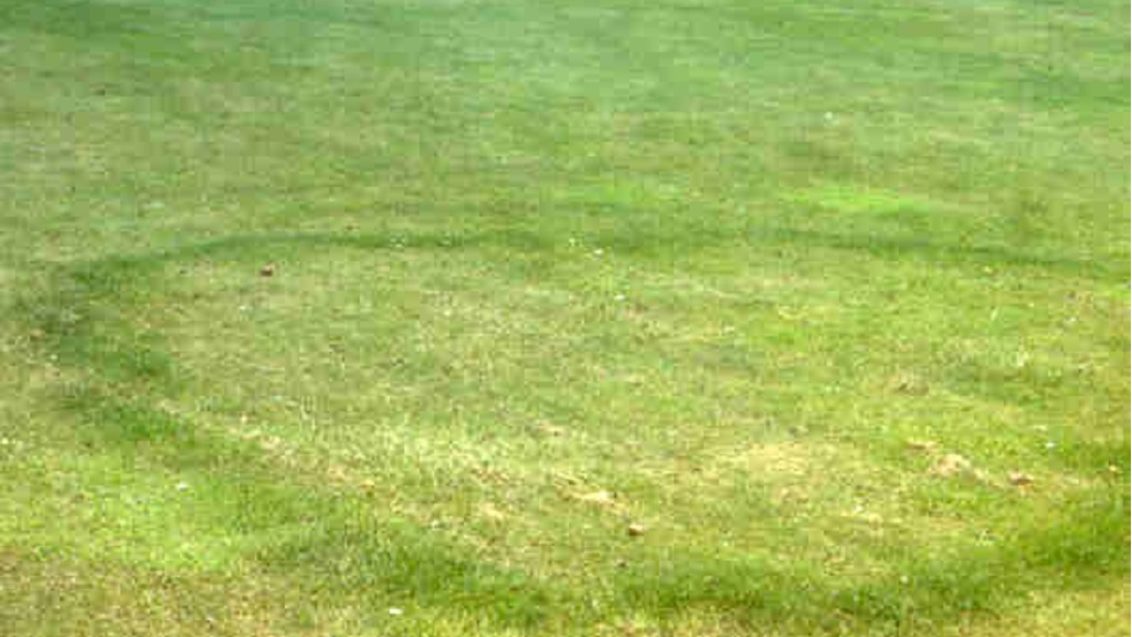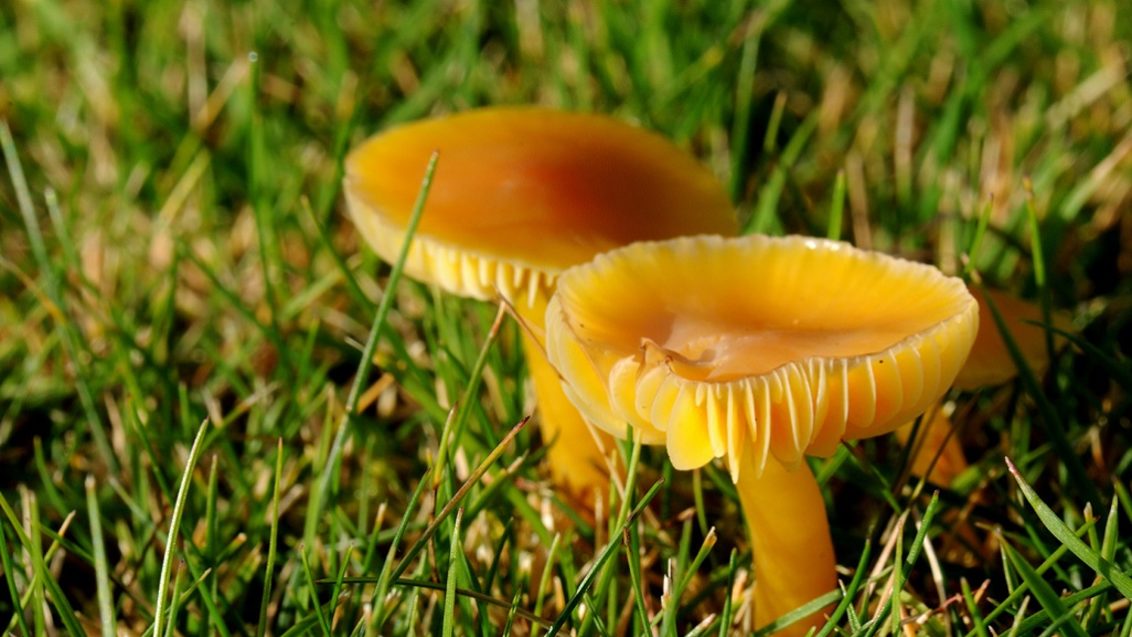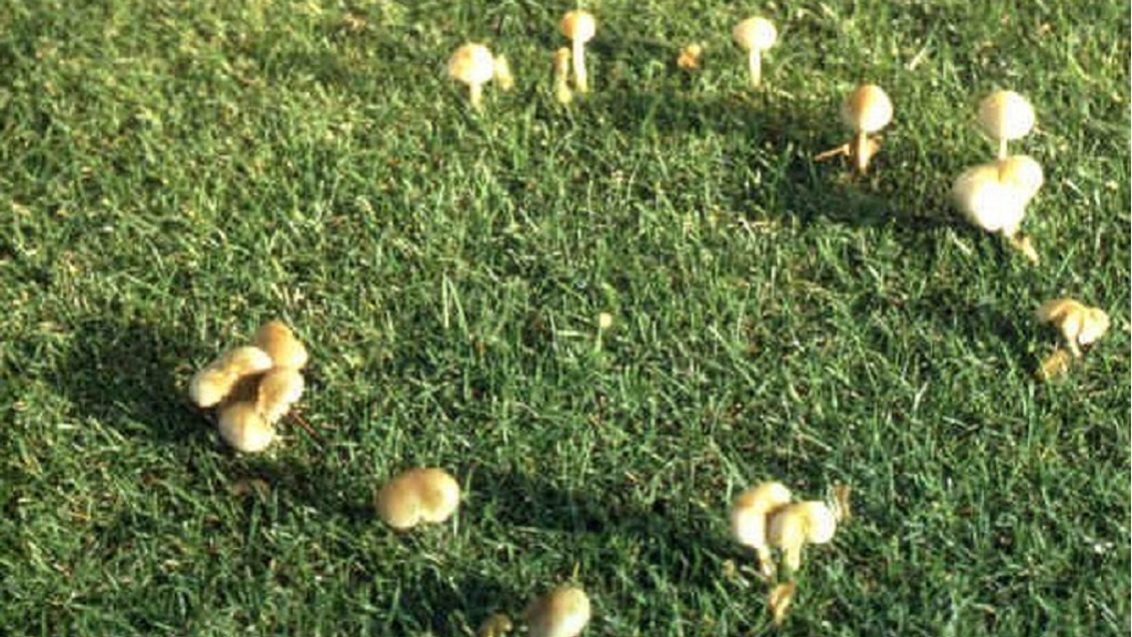Fairy Rings
Turf Disease
The term 'fairy ring' is used to describe a number of turf grass diseases where soil-borne fungi cause certain symptoms to develop on the surface of the sward. Fairy rings are caused by the activity of many fungi classified as basidiomycetes.
Not all basidiomycete fungi cause fairy rings but all fairy rings are caused by basidiomycete fungi! Dry patch symptoms on fine turf areas are also thought to be associated with basidiomycete fungi.
Where is Fairy Ring found?
Each of the individual fungi grow through the rootzone, feeding off the organic material as it increases in size. The effects seen on the turf surface are roughly correlated with the amount of fungal mycelium within the rootzone. Since the fungal mycelium is made up of compounds that naturally repel water (in the same way that our fingernails do), the more mycelium that is present, the more water that can be repelled by it. Therefore, the larger the amount of fungal mycelium, the more severe or noticeable the effect on the turf.
When is Fairy Ring likely to attack turf?
Fairy Rings are most obvious during the summer months, however, infection will be present in the soil from one year to the next. In fact there are records of Fairy Rings over 100 years old and up to several hundred meters in diameter.The various fungi that cause Fairy Rings will thrive in high organic matter soils, buried tree stumps and other organic debris such as thatch and grass debris on the surface.
Effects of Fairy Ring
Turf pathologists classify fairy rings in to four types: Type 1, Type 2, Type 3 and superficial fairy rings (or thatch fungi). Within each of these four groups there may be many individual fungi that cause fairy ring development, but within each group the symptoms that these fungi cause will be very similar.
Type 1 fairy rings typically have a ring of dead grass which is bordered on both sides by a band of stimulated grass growth. Fungal fruiting bodies (mushrooms or toadstools) may be found associated with these rings.
Type 2 fairy rings are typically a ring of stimulated grass growth with or without the fungal fruiting bodies.
Type 3 fairy rings generally show no change in the growth of the grass but are evident only by the presence of rings of fungal fruiting bodies.
Superficial fairy rings are caused by fungal activity in the thatch (hence, also known as thatch fungi). They can cause rings or patches of yellowed or greened-up turf and may also be associated with slight depressions of the turf surface. Fungal fruiting bodies will not be seen with superficial fairy rings.
In many cases, the presence of these fungi can be confirmed by smelling the rootzone which will take on a characteristic musty smell. Although all fairy rings will start from a single point and increase in size annually, eventually forming recognisable rings, the growth of these rings will not stop unless the fungus hits a solid surface or disturbed ground. As rings grow together (or coalesce), the definite ring pattern will change to become broken rings, arcs or ribbons across the turf surface.
High Risk Situations
- Presence of tree stumps and other resevoirs of organic matter.
- High thatch levels in fine turf.
- High organic matter soils.
Integrated Turf Management
Without organic matter, the fungi causing Fairy Rings will not survive, therefore any measures that reduce the presence of organic matter will reduce the presence of disease, e.g. removal of old tree stumps or removal of excessive thatch.
Symptoms of Fairy Ring are often more obvious in the summer due to lack of moisture and available nutrients to the turf, therefore activities such as spiking, aerating, removal of soil cores and use of wetting agents will improve water penetration into the root zone and help alieviate localised dry spotting.
Fungicidal Control
On the basis of limited evidence, Heritage will reduce the effects of Type 2 Fairy Rings. For best results applications should be made with the addition of a wetting agent to sufficiently wet the soil to allow the Heritage to get to the basidiomycete.
Timing
Repeat at minimum intervals of 2 weeks. The maximum number of Heritage applications per annum is 4 OR as described in the Resistance Management section of this label.

